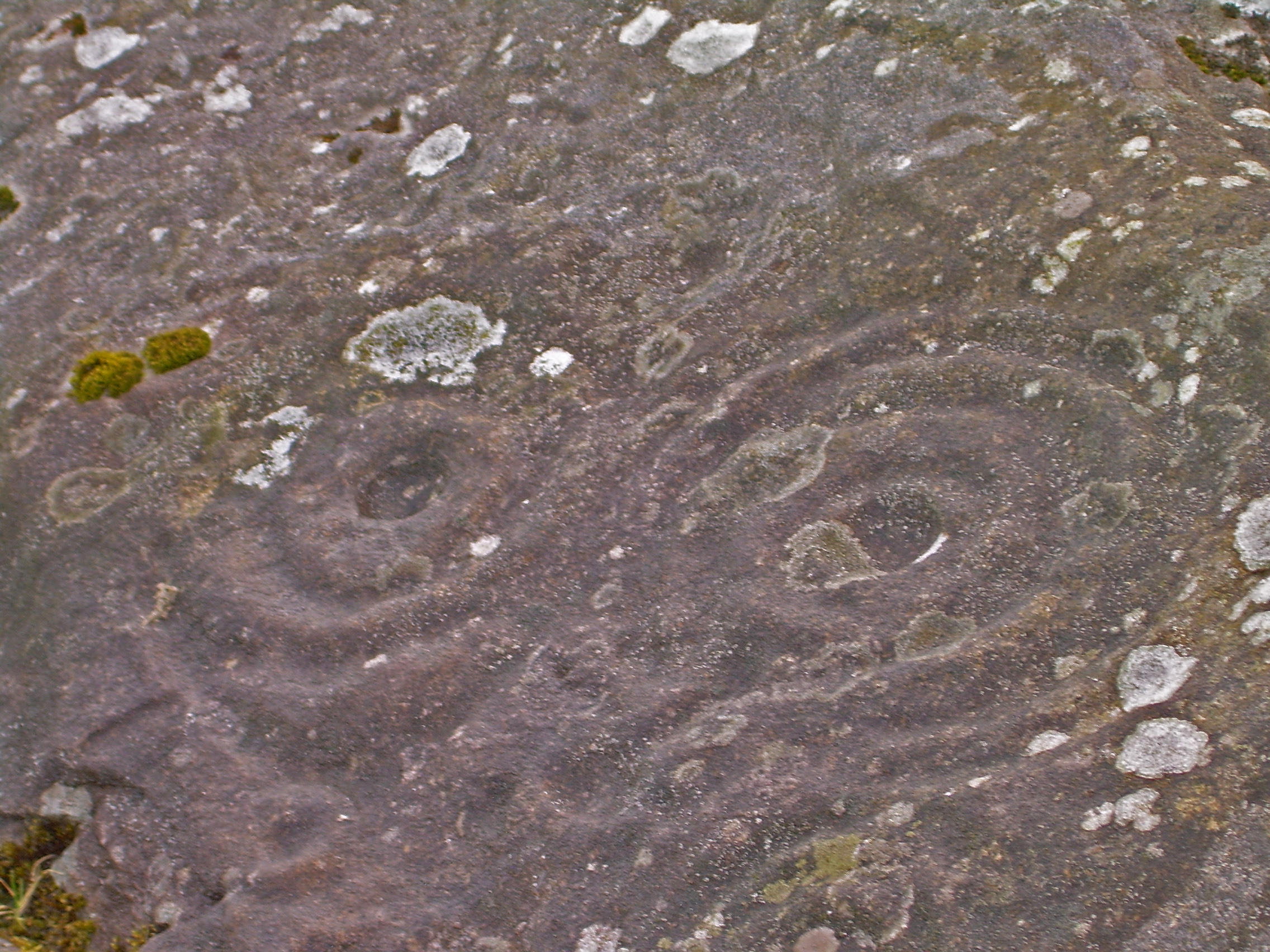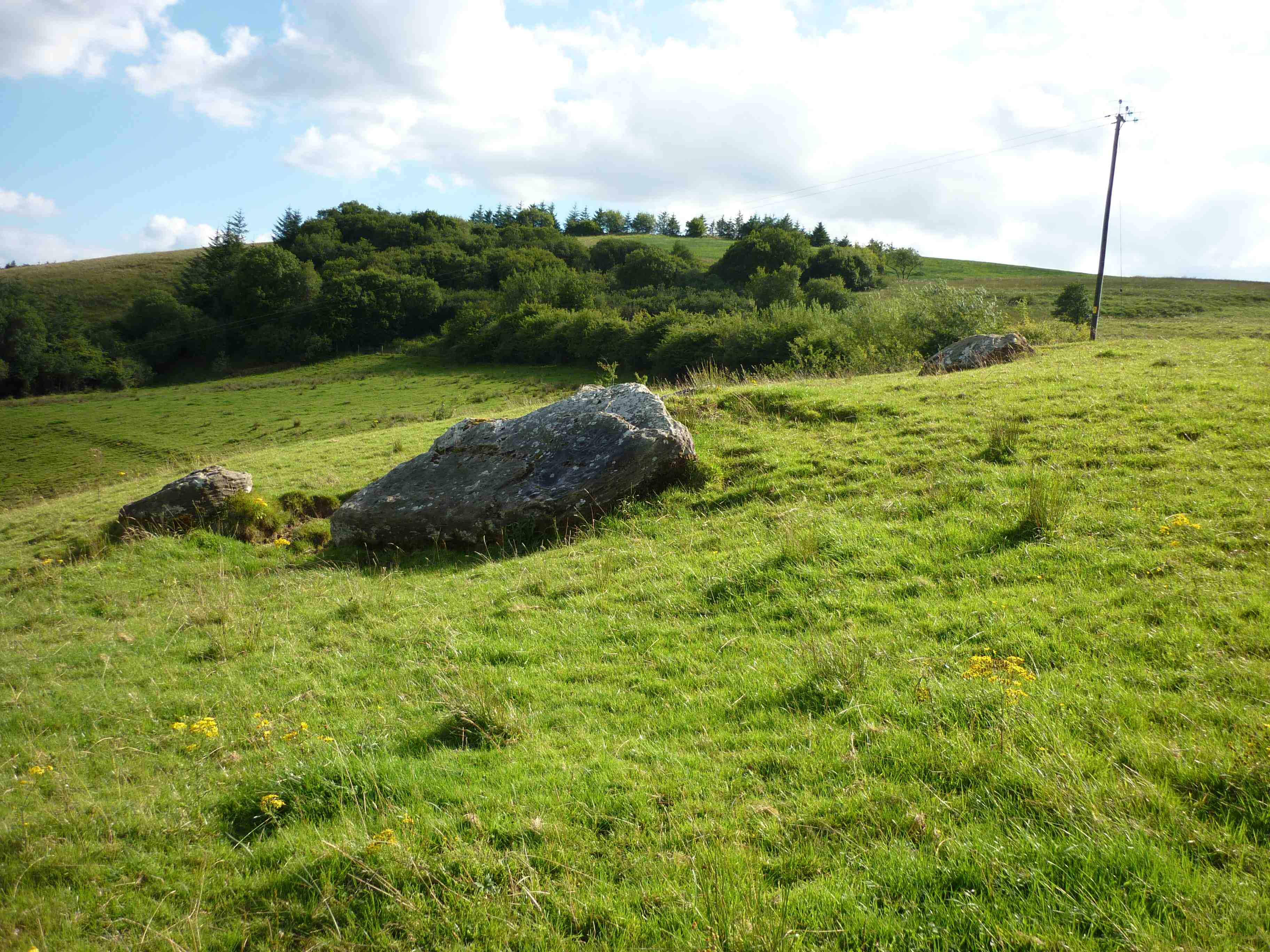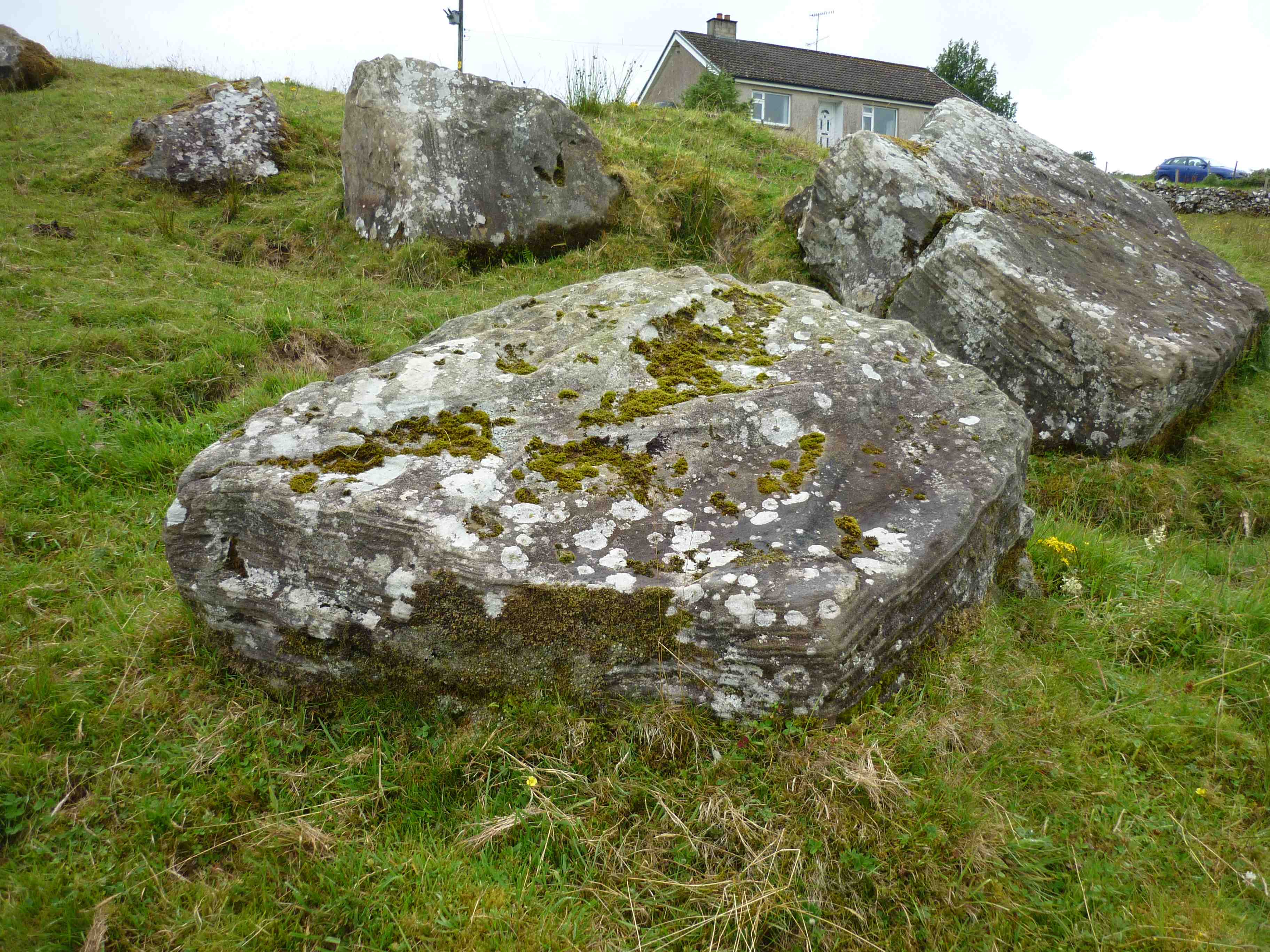FERMANAGH, Northern Ireland – The Smithsonian recently reported a possible proof of a folk cure from Northern Ireland that involves graveyard clay from Boho (pronounced Bo) village in County Fermanagh.
Scientists have found that the clay has antibiotic properties. The specific properties of the clay inhibited the growth of several drug-resistant pathogens, including Methicillin-resistant Staphylococcus aureus (MRSA).
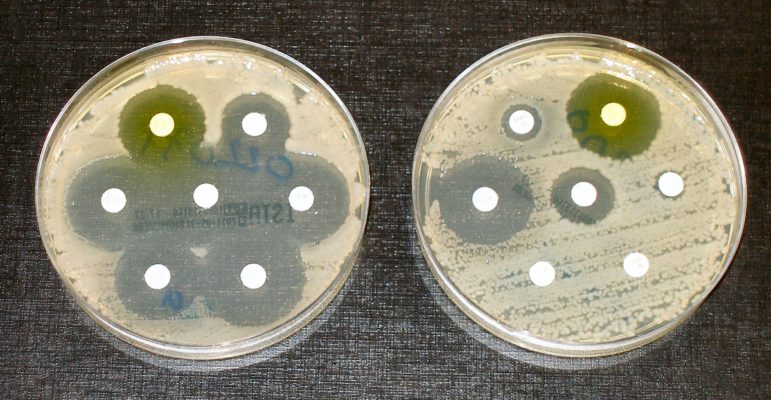
Cultures of bacteria – the left petri dish contains bacteria sensitive to antibiotics, the one the right is resistant – Image credit: Dr Graham Beards, CC BY-SA 4.0
The Folk Cure
Locals residents believe earth from the grave of Father James McGirr, who died 1815, holds healing powers. The Smithsonian article contained microbiologist, Gerry Quinn’s description of the local belief. Locals believed that McGirr had a gift for healing. On his deathbed, he is rumored to have said, “After I die, the clay that covers me will cure anything that I was able to cure, when I was with you while I was alive.”
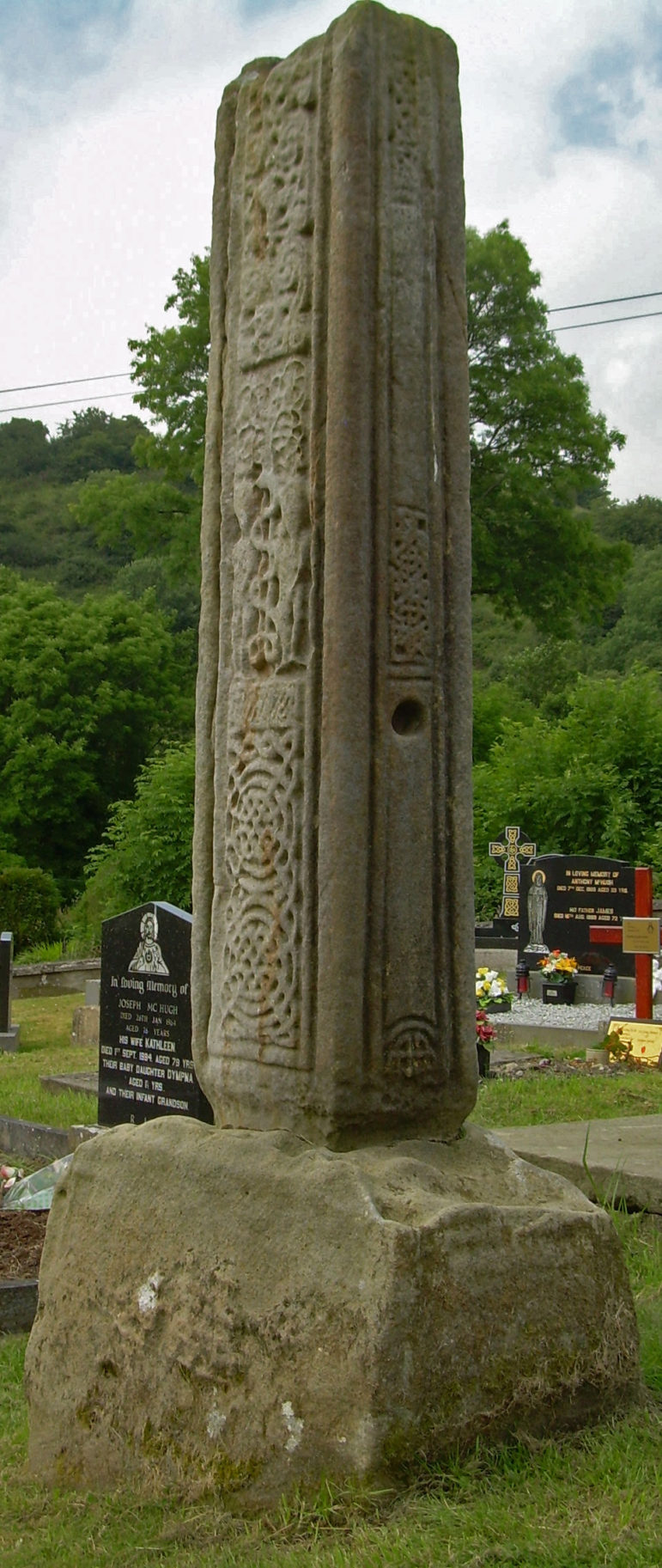
Boho High Cross at the Sacred Heart Church – Image credit: Youngbohemian, CC BY-SA 3.0,
Quinn described the details of the folk healing ritual. The person seeking healing would kneel beside the grave, take about a thumbnail of clay, and then put that clay in a cotton pouch. Next, they would walk home, but could not speak to anyone they met on the road. Once home, they would place the packet of clay under their pillow.
Quinn reported that locals believed this would ease many minor ailments. Those ailments included flesh wounds and sore throats. Locals call this soil “blessed clay.” According to Quinn, if someone fails to return the clay within four days, very bad luck would follow.
The BBC reported that people would sometimes say particular prayers when collecting the soil. The BBC also quoted local historian, Frank McHugh who said the Catholic church has not sanctioned this practice.
While this practice may be unsanctioned, the Catholic cemetery has posted a sign that says, “Only a spoonful of soil should be removed and must be returned to Father McGirr’s grave on the fourth day.“ A variety of spoons have been left on and around McGirr’s grave.
Dr. Gerry Quinn
Dr. Gerry Quinn not only works as a microbiologist, but he also grew up in Boho. As a boy, he heard about the healing clay from his great uncle. That relative claimed an ability to cure jaundice with local herbs. On a trip back to Boho, he scooped up some clay from McGirr’s grave to examine. Whenever Quinn returns to Boho, he hunts the hills for more microbes.
According to the healing folk remedy Quinn was told, the person seeking the healing places the clay pouch under their pillow. No other antibiotic works by mere proximity. Quinn may have been told a version of the folk cure that had been diluted or altered in its many retellings. Could this discovery could represent a placebo effect cohabitating with a coincidence? Or possibly a whole new way that antibiotics might work?
The Smithsonian reported that Quinn did return the clay that he took for analysis back to Boho. “Sure, I’m a scientist,” he says, deadpan, “but why take unnecessary risks?”
The location
Boho refers to a parish and a village and nearby lies the town Toneel North. The area also hosts the Reyfad Stones that date to the Neolithic period. Like those at Newgrange, these stones have cup and ring inscriptions. The nearby mountains have multiple caves. Quinn suspects that this folk healing may have pre-dated Father McGirr.
The science behind the folk remedy
Antibiotics arise from other organisms defending themselves against microbes. One bacteria, Streptomyces, has produced most of the antibiotics in use.
Paul Dyson, another microbiologist, said that unlike most bacteria, Streptomyces are immobile. They can’t move out of the way of danger. To survive, they’ve had to develop defenses against competing bacteria. Humans use those defense qualities of the microbes to develop antibiotics.
Quinn knew Streptomyces thrive in difficult settings such as alkaline lakes and caves. Boho, one of the few alkaline grasslands in Northern Ireland, has a limestone/shale bedrock, that also releases radon gas. Plausibly, the clay in Boho might have bacteria with antibiotic properties.
Quinn had worked at Swansea University Medical School in Wales. He now works at Ulster University in Northern Ireland. Along with some former Swansea colleagues, Quinn analyzed the clay samples that he brought from McGirr’s grave. They found that it had unique antibiotic properties.
The closing of the window for antibiotic cures
Since penicillin began to be used in 1942, many previously fatal bacterial infections are no longer fatal. Unfortunately, this era may soon be ending. Several serious bacterial infections have become drug-resistant.
The most well-known of these drug-resistant bacteria is MRSA (methicillin-resistant Staphylococcus aureus). It causes about a third of all “flesh-eating bacteria” infections in the U.S. Drug-resistant STDs are also increasing. According to a UN report, drug-resistant infections have accounted for 700,000 deaths per year.
Major factors in various strains of bacteria becoming resistant is antibiotics overuse in prescribing, their prevalence of use in livestock as a pre-emptive measure, and patients’ failure to take them for the prescribed length of time. Unless incorrect antibiotic use decreases, the U.N. projects that number to increase drastically.
This has led researchers to look to two areas for new antibiotics. Ethnopharmacology investigates ancient herbal remedies and healing techniques and folk medicines. Another method lies in figuring out where new species of bacteria might be. Both these approaches came together in Boho, County Fermanagh.
Frontiers in Microbiology reported that the antibiotics from the Boho clay inhibited the growth of MRSA. So far, this inhibition has only occurred in a petri dish, in controlled studies. Before it might become available to be prescribed to the public, several things would have to happen. First, a potential manufacturer would have to agree to develop it. Then, it would have to go through and pass three clinical trials.
Currently, pharmaceutical companies are less interested in funding and investing in the development and production of antibiotics. The lengthy process (10-15 years) and cost (as much as $2 billion) to bring a new drug to the market that would offer far less profit than drugs developed for more chronic diseases. Most antibiotics are prescribed for short-term use and are always in danger of bacteria becoming resistant to them. Whereas drugs for chronic illnesses, like diabetes, high blood pressure, or heart disease are long-term in their use.
Editorial note: The article has been updated to correct the amount to bring a drug to market from $2 million to $2 billion. Thanks to our readers who brought the error to our attention.
The Wild Hunt is not responsible for links to external content.
To join a conversation on this post:
Visit our The Wild Hunt subreddit! Point your favorite browser to https://www.reddit.com/r/The_Wild_Hunt_News/, then click “JOIN”. Make sure to click the bell, too, to be notified of new articles posted to our subreddit.
